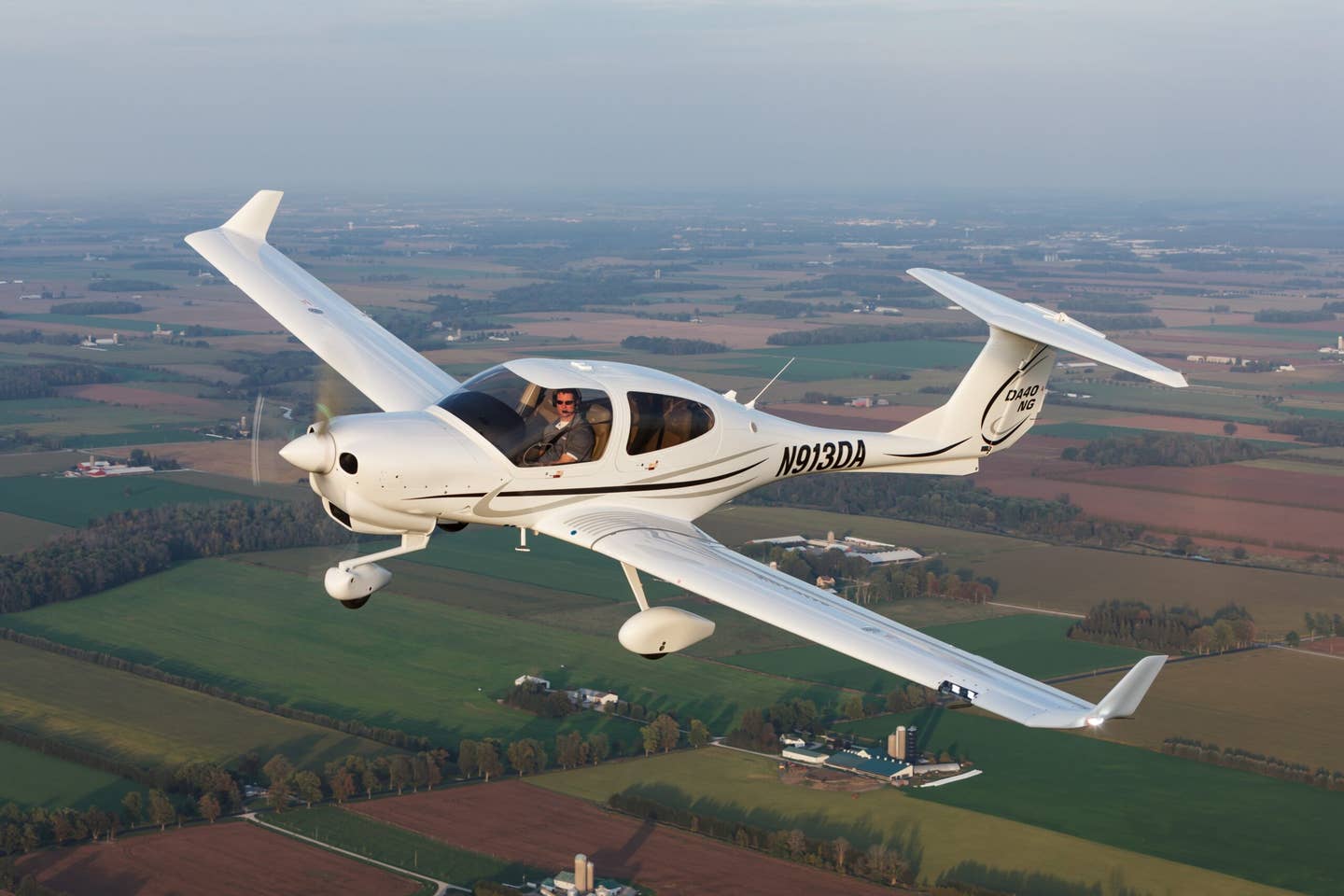Buying A Used Aircraft: Diamond DA40 Star
If you have your sights set on a composite four-place piston, the Diamond DA40 Star is likely on the list of airplanes to consider. There is plenty to like, and…

Diamond DA40 owners rave about their airplane’s performance and reliability.
If you have your sights set on a composite four-place piston, the Diamond DA40 Star is likely on the list of airplanes to consider. There is plenty to like, and DA40 owners rave about their airplanes' performance and reliability. But the deal sealer could be the aircraft’s impressive safety record, thanks to a smart overall design and the airplane’s forgiving handling around the runway. There are over 20 years of DA40 models to choose from, but even the earliest DA40 models sell for top dollar in the current market.
Diamond DA40: Sailplane DNA
Austria-based Diamond, which started life as Dimona in the early 1980s, originally produced the model H36 motorglider for the European market and eventually got its feet wet in the U.S. when it imported the Austrian-built two-place DV20 Katana. The company changed its name to Diamond in 1996 and moved forward with plans to produce the four-place DA40, introducing prototypes at the trade show in Friedrichshafen, Germany. While these early testbeds had Rotax 914 (and Continental IO-240) powerplants, Diamond quickly learned that the Star needed more power, and eventually certified the airplane with a 180-HP Lycoming IO-360-M1A mill, while launching production at the company’s London, Ontario, plant.
Diamond’s experience with sailplanes certainly shows in the T-tailed DA40’s construction, starting with its long and high-aspect-ratio wing. The clean fuselage is constructed of wet layup material in two halves that are bonded together longitudinally, with the vertical stabilizer as part of the assembly and the tail and wings added separately. The cabin/cockpit has a large canopy that’s hinged at the front, while a rear pin-release hatch for backseat occupants makes for efficient egress during emergencies. Worth mentioning is that the DA40’s fuel supply is well protected in removable aluminum cells stored inside the twin carbonate layup, with no tendency to spark post-crash fires, based on our accident research over the years.
Speed, systems, safety
DA40s won’t exactly outpace a Cirrus SR, but the Lycoming IO-360 is well-matched with the airframe for decent speed and efficiency. Late-model Stars cruise at an honest 150 knots, while 145 knots is typical for earlier ones. Gross weight in earlier models was 2535 pounds (and 2645 pounds for later ones) but check that against the typical 3050-pound Cirrus SR22 and 2450-pound Cessna 172. For a departure from the norm, there’s also the 168-HP Austro AE300 diesel that came in the 2014 DA40-NG. Still, Lycoming-powered Stars are the most common.
The Star (with its all-electric avionics suite) was first introduced with traditional flight instruments, although many have been retrofitted with Aspen and Garmin EFIS. The DA40 was one of the first piston singles type-certified with Garmin’s G1000 integrated avionics, and many owners are less than satisfied with the upgradeability of these early systems, especially when it comes to WAAS capability. Later-gen G1000 NXi systems are a huge improvement, especially with the embedded GFC 600 autopilot. Early ones had rate-based BendixKing KAP140s that deserve careful attention during prebuy.
As for DA40 wrecks, we continue to be impressed by the small number of accidents that make the NTSB reports. The limited number of runway loss of control events (RLOC) reinforces what we know about our own experience flying these airplanes, and that is they easily handle significant crosswinds and have good ground handling attributes. It’s a decent short-field machine, but pilots need to fly it by the numbers all the time, every time. In one particular wreck, the POH called for 1570 feet to clear an obstruction on takeoff, but there was only 1150 feet available. Sure enough, the airplane hit the trees.
Current Diamond DA40 market
Owners like their DA40s, and with the right training, most report an easy transition. “The center stick is fun and took about one minute to get used to. I usually fly at around 7000 feet at 65 percent power burning 7.6 GPH at 130 knots true,” John Mullen reported for his 2003 DA40. There are decent aftermarket mods, including the Cabin Cool air conditioning system from Florida-based Premier Aircraft, and some owners invest in electronic ignition, a composite propeller and the Forced Aeromotive belt-driven supercharger. Supercharger-equipped DA40s make full sea-level power at up to 7000 feet MSL.
For certain, well-cared-for DA40s come at a big price premium. According to the Spring 2022 Aircraft Bluebook, a 2000 DA40 Star has a typical retail price of $170,000, while a 2009 DA40-XLS is $310,000 and a 2019 DA40-XLT will almost always sell for nearly $500,000.
For a deeper dive into the used Diamond DA40 Star market, head to Aviation Consumer and the Used Aircraft Guide, where you’ll get a detailed model history, historical resale values, recent FAA ADs, competing model speed/payload/price comparisons and a detailed current NTSB accident scan summary.






